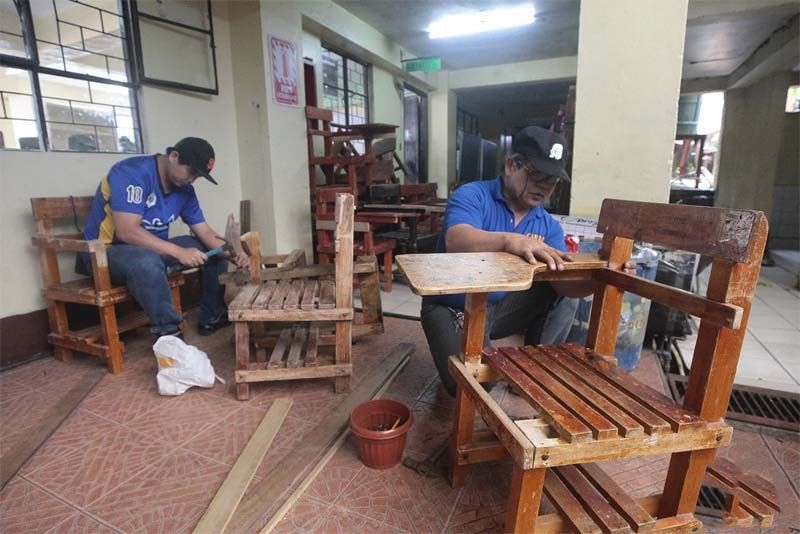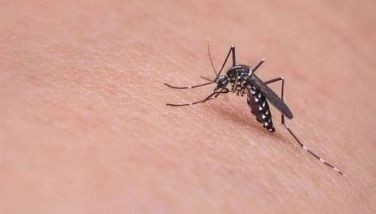Proposed budget not enough to address classroom shortage, documents show

MANILA, Philippines — Despite the government’s repeated commitment to address the shortage of classrooms in public schools, the proposed budget for the Department of Education (DepEd) next year is not expected to make a dent in the years-long problem, according to official documents.
In his second State of the Nation Address last month, President Marcos claimed that the “shortage of classrooms and facilities is being addressed.”
“Aside from new constructions, schools and facilities are being retrofitted to become ready for the future – ready for hybrid and high-tech learning, and also climate-ready and disaster-proof,” Marcos said.
A review of budget documents submitted to Congress, however, showed that the government is only targeting the completion of 1,628 new classrooms in 2024. This is even lower than this year’s target of 6,379.
The government is also targeting 3,943 new classrooms that should be undergoing construction by next year.
Education officials earlier said the classroom shortage in the public school system could be as high as 90,000.
During her Basic Education Report last January, Vice President and Education Secretary Sara Duterte also noted the high number of school buildings that need repairs or are set for condemnation.
Out of 327,851 public school buildings, Duterte said 100,072 need minor repairs, 89,252 need major repairs and 21,727 are set for condemnation.
Yet, for next year, the government only proposed a budget of P33.7 billion for basic education facilities. This includes P19.6 billion for the construction, replacement and completion of new school buildings; P6.5 billion for the repair of existing facilities and P2 billion for the construction of medium-rise school buildings and installation of disability access facilities.
The amount is slightly higher than this year’s P15.6 billion for new school buildings and P4.9 billion for the repair of existing ones.
Despite the increase, groups maintained this is still far from the requirement to address the shortage.
The Alliance of Concerned Teachers (ACT) has repeatedly called for the construction of 50,000 new classrooms every year until 2028 to address the shortage, something Duterte previously said is impossible to do.
“The gravity of the classroom crisis necessitates a more ambitious and long-term plan,” ACT secretary-general Vladimer Quetua said, noting that this year’s budget is only enough for around 5,000 new classrooms.
“With such allocation, the classroom shortage is even expected to worsen next school year,” Quetua said.
The ACT was among those who called for the reallocation of the Marcos administration’s proposed confidential funds to other social services programs. The P10.14-billion proposal includes P500 million for the Office of the Vice President and P150 million for DepEd.
Missed targets
Meanwhile, budget documents also showed that the DepEd has missed several targets set in 2022, including the number of classrooms built to learning materials procured.
Latest available data specified in the 2024 National Expenditure Program (NEP) showed that none of the 1,168 new classrooms that were supposed to be built last year were finished, with 1,065 still under construction at the time of the data submission.
Data also showed that none of the target 6.7 million textbooks and learning materials were procured for printing and delivery.
Procurement of various tools and equipment also fell short: only 2.1 million out of 5.1 million pieces for science and technology, none of the 175,209 pieces for technical and vocational livelihood and only 382 out of 45,669 packages for information and communications technology (ICT).
Only 9,338 public schools were provided with ICT packages, from the original target of 47,339.
The DepEd was able to fill 9,548 out of the 10,000 new teaching positions created last year.
Based on the NEP 2024, which the Department of Budget and Management submitted to Congress on Aug. 2, the percentage of public schools meeting the standard ratio for teachers is near or above the 2022 targets.
A total of 36,318 out of 36,748 elementary schools (98.83 percent), 7,648 out of 8,875 junior high schools (86.1 percent) and 5,850 out of 6,633 senior high schools (88 percent) hit the standard ratio, with the target set at 99 percent, 87 percent and 86.6 percent, respectively.
But those hitting the standard classroom ratio for Grades 1 to 10, which is at 74 percent (34,980 out of 47,270), is still below the 89 percent target.
Some 65 percent of senior high schools (4,857 out of 7,472) hit the standard classroom ratio, significantly higher than the 18 percent target.
The DepEd has yet to release the updated figures on these standard ratios, but an earlier statement said that it ranges from 1:25 to 1:40, depending on the grade level.
The agency has yet to issue a statement on the matter.
Retention, completion
On the upside, data showed that DepEd achieved its target for retention and completion rates.
Retention rate for elementary and secondary level even surpassed 100 percent – 101.18 percent and 103.98 percent, respectively – meaning more students enrolled for School Year 2021-2022 than in the previous year.
In terms of completion, 99.83 percent in elementary and 98.66 percent in high school finished the school year, higher than the target of 95 percent and 82 percent, respectively.
The Philippine Business for Education, however, earlier raised concerns over the supposed “mass promotion” policy in basic education, noting that it does not ensure that students are obtaining the fundamental skills that they need.
Based on the data, the percentage of students who achieved at least “nearly proficient” in the National Admission Test is still below targets, particularly in elementary and senior high school.
It was at 27.77 percent among elementary students, 48.13 percent among junior high school and 37.15 percent among senior high school. The target for 2022 was 44 percent, 61 percent and 28 percent, respectively.
Meanwhile, 3.1 million students benefitted from the school-based feeding program, almost double the 1.7 million target.
Some 2.3 million out of the 2.6 million target received subsidies last year.
- Latest
- Trending





























